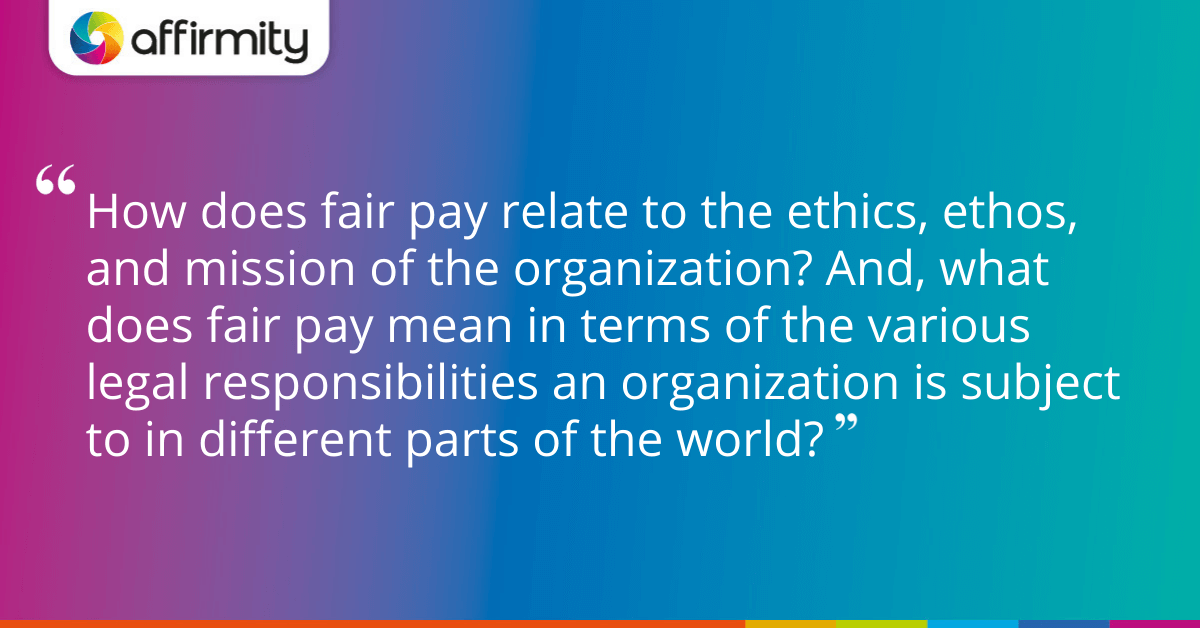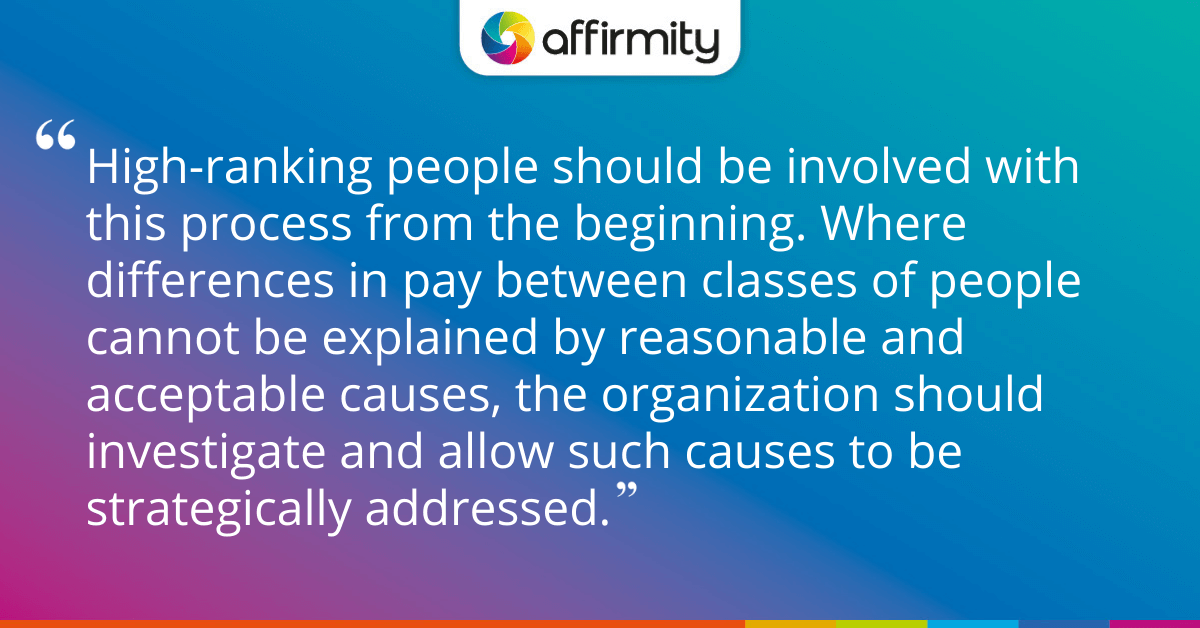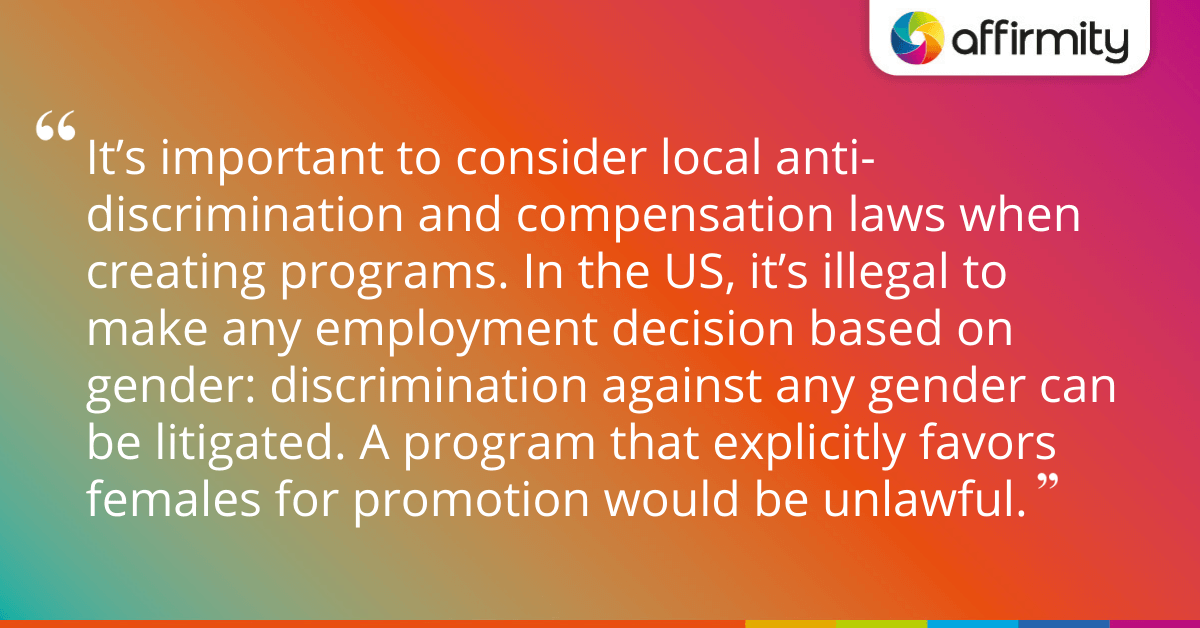Fairer pay yields greater employee trust and higher profits while keeping your business attractive to the best talent available. You know equitable pay should be a priority, but what’s the best way of making it a priority? In this article—another slice of our recent white paper ‘Cultivating Fair Pay in the Workplace: Your Guide To Global Pay Equity’—we lay out a five-step process for introducing equitable pay and making it stick.
Learn more about Pay Equity in this digital training video.
Step 1: Define What Fair Pay Means To Your Organization

The first step to paying people fairly is to figure out what that means for an organization and what its standards need to be. How does fair pay relate to the ethics, ethos, and mission of the organization? And, what does fair pay mean in terms of the various legal responsibilities an organization is subject to in different parts of the world?
Depending on the size and geographic presence of an organization, this task may be simple, or it may need to involve several high-ranking executives along with a variety of HR professionals and legal counselors who are familiar with different societal and legal landscapes.
Want some ideas for making the case for fair pay in your organization? See our infographic ‘6 Reasons Why Organizations Should Care About Fair Pay’
Step 2: Perform Analyses That Show Where You Come up Short
The second step is to see where your organization may be falling short of the created standards. This can be done through a variety of statistical fair pay analyses and work analyses, including:
- Overall pay gap analyses
- Corrected pay gap analyses
- Pay equity analyses looking within specific job classes
- Pay equity analyses between comparable job classes
- Various job valuations systems
- Various workforce analytics
Note that as part of this process, an organization will be creating a great deal of information that could be used against it. It’s recommended that these analyses be done under privilege where possible, and that the organization become familiar with safe harbor provisions with respect to compensation analyses in the various regions it operates. Safe harbor laws provide various forms of legal protection in response to some action taken, such as a compensation analysis.
Step 3: Account for Explanatory Factors

The third step is to figure out if potential fair pay issues are explainable in a way that doesn’t violate the created standards for pay fairness. This may involve a great deal of investigation and, for larger companies that see a lot of potential issues, should involve a commensurate outlay of resources.
This is one of the reasons high-ranking people should be involved with this process from the beginning. Where differences in pay between classes of people cannot be explained by reasonable and acceptable causes, the organization should investigate the causes of unacceptable pay differences. This will allow such causes to be strategically addressed.
More from the blog: ‘Answering 11 Questions That Will Help You Use Data To Improve and Advance Your D&I Program’
Step 4: Design and Implement Your Corrective Programs
The fourth step is to create programs designed to overcome the various causes of unacceptable pay differences. These programs can take a variety of forms:
- Simple pay increases for people determined to be underpaid due to unknown factors.
- Recruitment campaigns designed to attract underrepresented classes to specific positions or levels within the organization.
- Changes to policies and procedures that allow for more needed flexibility and acceptance of class-based requirements.
- Mentorship programs designed to facilitate leadership qualities and skills in a greater diversity of people.
- The establishment of diversity and inclusion programs, and purposeful consideration of people in more than one category (males and females, for example) when granting promotions.

While an almost infinite number of things can be done to address fair pay issues in an organization, it’s important to consider local anti-discrimination and compensation laws when creating these programs.
For example, in the United States, it’s illegal to make any employment decision based on gender status, and discrimination against both females and males can be litigated. This would make a program that explicitly favors females for promotion unlawful. Similarly, many countries have provisions in their fair pay laws that prevent companies from lowering the pay of employees as a means of eliminating pay differences between classes.
Step 5: Validate & Reiterate
The fifth step is to validate the programs designed to increase fair pay by running analytics from Step 2 on some recurring schedule, usually once a year. If no or very small positive effects are occurring, then it may be prudent to re-examine both the assumed cause of the fair pay issues, and the efficacy of the programs designed to address the issue, and make adjustments. In this way, resources can be continually directed to greatest effect.
Also on the blog: ‘3 Reasons To Monitor Your Affirmative Action Plan (And 3 Ways To Do It Well)’
Unfair Pay: Continue Reading
Elsewhere in the white paper we also cover:
- The many different terms and the analytical lenses we can bring to discussions of fair pay. This includes a look at differences between ‘equity’ and ‘equality’
- The mechanisms of unfair pay, including the myths and biases that undermine the compensation of certain groups
- The increasingly compelling case for why your organization needs to care about, and take action on, pay inequity
Download your copy of the white paper today.

Need additional insight and assistance as you change pay practices in your organization? Contact our team for more information.
 About the Author
About the Author
Patrick McNiel, PhD, is a principal business consultant for Affirmity. Dr. McNiel advises clients on issues related to workforce measurement and statistical analysis, diversity and inclusion, OFCCP and EEOC compliance, and pay equity. Dr. McNiel has over ten years of experience as a generalist in the field of Industrial and Organizational Psychology and has focused on employee selection and assessment for most of his career. He received his PhD in I-O Psychology from the Georgia Institute of Technology.
